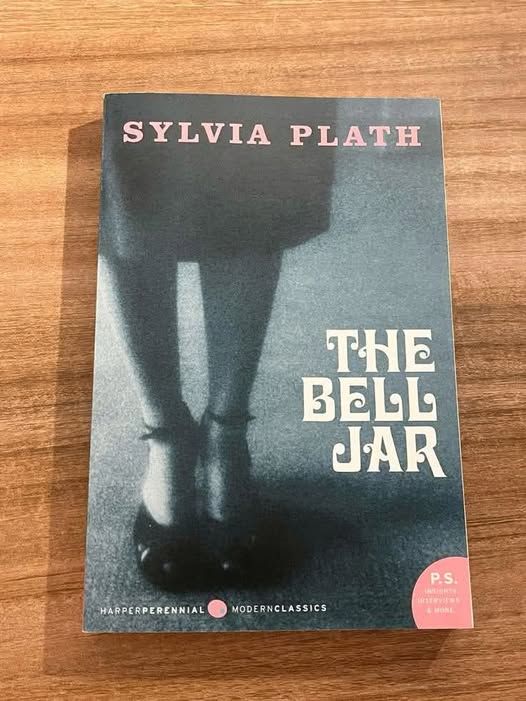The Bell Jar by Sylvia Plath immerses readers in the turbulent mind of Esther Greenwood, a young woman teetering on the edge of mental collapse. Esther’s journey is one of profound struggle, a descent into the depths of depression where the pressures of societal expectations, identity crises, and the search for meaning converge into a suffocating darkness.
From the outset, Esther feels like an outsider, disconnected from the world around her. She’s a bright, ambitious young woman, yet this promise is overshadowed by a growing sense of alienation. The world that once seemed full of possibilities now feels like a prison, its walls closing in on her. It’s as if she’s living under a bell jar, a stifling glass dome that separates her from the vibrancy of life outside, leaving her trapped with her own spiraling thoughts.
The bell jar is more than just a metaphor for Esther’s mental state; it symbolizes the overwhelming pressure she faces to conform to societal norms, particularly those imposed on women. Esther is caught in a battle between her desires and the rigid roles society expects her to fulfill. The conventional paths of marriage and motherhood, which are held up as the ultimate goals for women, feel like chains to her, stifling her ambitions and suffocating her spirit. She yearns for freedom, for the ability to define her own life, yet every attempt to assert control seems to push her further into despair.
Her internal conflict is compounded by the relentless pressure to succeed in a world that is unforgiving and competitive. As a scholarship student, Esther is expected to excel, yet the weight of these expectations becomes unbearable. She begins to question the very foundation of her identity, wondering who she is beyond the labels and accolades that have defined her so far. Her once clear path to success now seems fraught with uncertainty and fear, and she finds herself drifting further from the person she thought she was.
Isolation becomes both a cause and a symptom of her deteriorating mental state. As Esther’s depression deepens, she withdraws from those around her, unable to connect with even the people who care about her. This loneliness is excruciating, amplifying her feelings of worthlessness and hopelessness. The world becomes a blur, a place where she no longer belongs, and she starts to contemplate escape as the only viable solution. The idea of running away, of disappearing, becomes increasingly seductive, yet each attempt only reinforces her sense of entrapment.
In her darkest moments, Esther grapples with thoughts of suicide, seeing it as a release from the unbearable pressure that has built up inside her. But even in this, she finds no solace, only further torment as she struggles to find a way out that doesn’t seem like a betrayal of herself. The bell jar continues to press down on her, heavy and inescapable, distorting her view of the world and leaving her feeling utterly alone.
Through Esther’s eyes, Sylvia Plath paints a haunting portrait of a young woman’s struggle with mental illness and the crushing weight of societal expectations. The novel is an intimate exploration of the fragility of the human mind, and of the desperate need for understanding and freedom in a world that often offers neither. Esther’s story is not just one of despair, but of the universal human struggle to find meaning and identity in a world that can be both beautiful and terrifying.

